
A good wallet is a reliable companion that rarely asks for attention and upkeep. Truth be told, most of us rarely think of our wallets beyond the times we need money. If this speaks to you, we invite you to give your trusty wallet the pampering it deserves.
Cleaning and organizing a wallet will get rid of all the germs transferred from cash, cards, and hands, and help it retain its shape and appearance. You don’t need to do it too often - once or twice a year will suffice. And your wallet will thank you by serving you for many years to come.
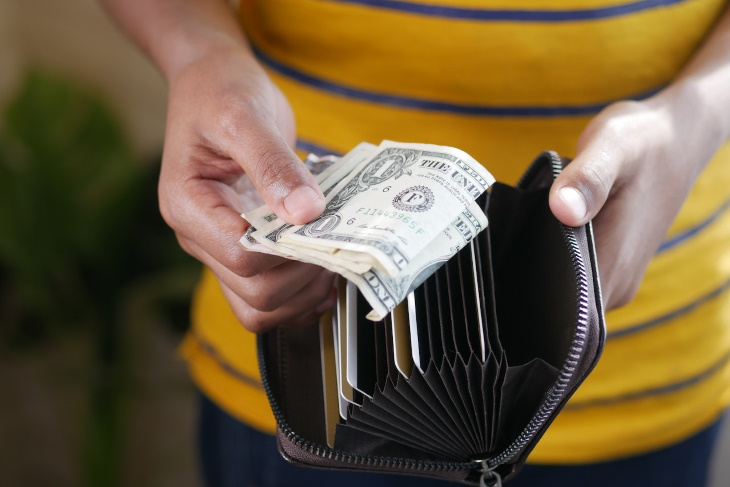
In order to clean your wallet, you’ll need to empty it first. Open every pocket and reach into every fold, fishing out every coin and every crumpled receipt. And while you’re at it, a little decluttering won’t hurt either. Chances are, your wallet is filled with expired coupons and gift cards, and you don’t even know it.
To begin, lay out the contents of the wallet on a table, then proceed to separate everything into categories: cash, cards, driver’s license or other documents, coupons and gift cards, and receipts. You may also have a miscellaneous category with small keepsakes and photos.
Start by separating coins from paper money. Organize the bills by denomination into a neat stack - starting from the smallest bills on top to the biggest denomination on the bottom. Set it aside.
Place all the extra coins in a jar or a piggy bank. After a few cleanups like this one, you’ll have enough coins to take to the bank and exchange them for cash.
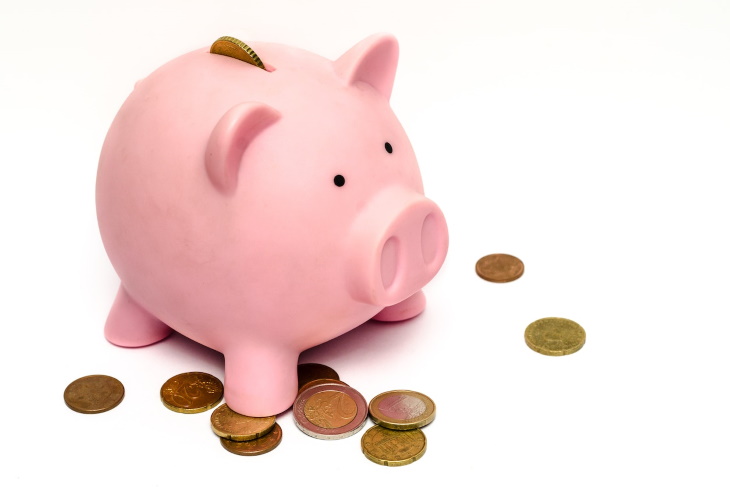
Divide the cards you’re carrying into two categories:
Most cards can be safely disinfected by gently wiping them down with a soft cloth dipped in rubbing alcohol.
Discard receipts that are older than 90 days. If you collect receipts for tax purposes, transfer them to a folder and store them at home.
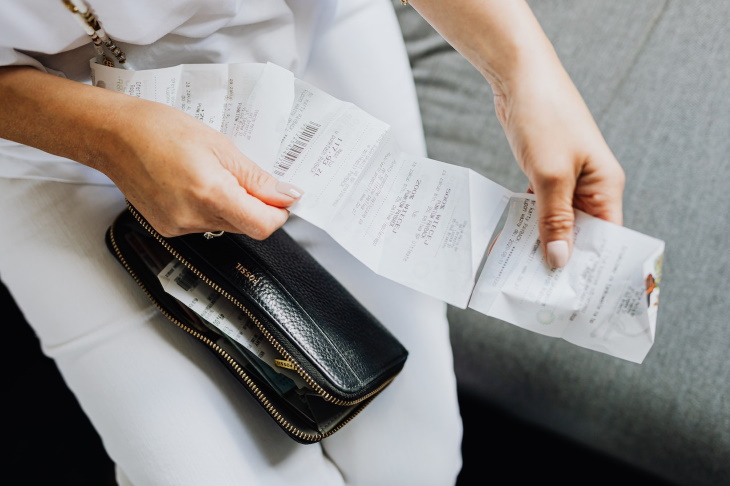
Look through these, one by one. Discard any expired coupons and gift cards right away. As for reward cards, think about which ones you use or don’t use. Avoid carrying cards you haven’t used for months - they only take up space in your wallet and make it more difficult to find necessary cards when you need them.
Set all the items you intend to fit into your wallet in a box (for now). You’ll be able to arrange them after cleaning.
Wait! Don’t chuck your wallet into the washing machine. No matter what your wallet is made of - leather, fabric, or synthetic materials - it will not keep its shape after laundry, even on the delicate wash setting. Prepare to work with your hands and save a good 24+ hours for your wallet to fully dry before using it again.
The cleaning technique and supplies largely depend on the material your wallet is made of. Find yours below and follow the steps:
Note: if your wallets are made of several different materials, each detail ought to be cleaned individually.

A high-quality leather wallet can last a lifetime, but it does involve regular upkeep. Cleaning a leather wallet requires two products: soap and conditioner. Saddle soap, simple glycerin soap, or a dedicated leather cleaner all do the job well.
As for a conditioner, it’s best to use a dedicated leather softener or leather restorer. This product will protect the leather from damage and keep it soft, supple, and shiny for years.
To prepare a natural homemade leather conditioner, combine 1/2 tablespoon melted beeswax, 1/2 tablespoon melted coconut oil, and 2 tablespoons olive oil (or sweet almond oil) until fully blended. Wait for it to cool before using it.
To clean a leather wallet, follow these steps:
See how this technique looks in action in the video below:
The same technique can be used to clean a faux wallet. Keep in mind, however, that the leather conditioner will not be as readily absorbed by faux leather, so you’ll need to use a tiny amount.

Suede wallets are less common than leather ones because this delicate material is more susceptible to wear and tear. That being said, suede details on leather wallets are not uncommon, and they do require a different approach when cleaning.
For cleaning suede, you will need a suede brush or a suede eraser. These tools clean the suede and restore the original suede texture, even in spots that look glossy or matted down. A specialized suede cleaner and conditioner are also necessary. These typically come in sprays or foams, and they are very different from your leather care products. All of these products are easily accessible in stores.
To clean a suede wallet, follow these steps:
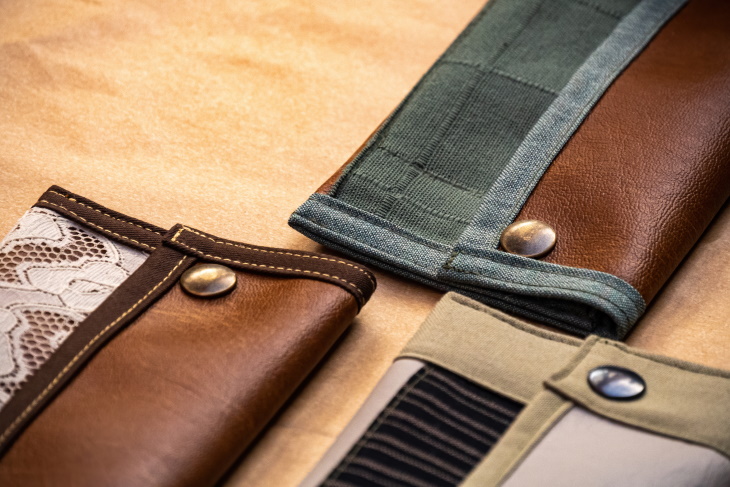
Wallets made of fabric, be it canvas or twill, can be just as reliable and sturdy as leather wallets, and they tend to be less expensive too. Cleaning a fabric wallet requires a few supplies, namely a toothbrush, a soft-bristled brush, paper towels, and a gentle fabric cleaner. The easiest cleaner to use is an upholstery foam cleaner because it easily penetrates the fibers and doesn’t leave behind white stains.
The same technique can be used to clean a nylon wallet.
To clean a fabric wallet, follow these steps:
Watch this epic wallet restoration video to see this technique in action:
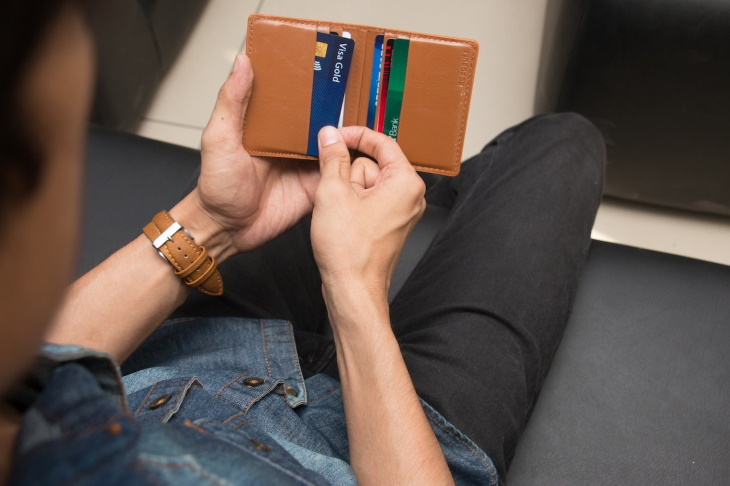
Your wallet looks as good as new, and you’re eager to use it. How exciting! You already know how to keep your cash organized, and you hopefully whittled down the number of cards and papers that go in the wallet too, so your wallet looks much neater too. Now, let’s learn to keep it organized for good.
First and foremost, avoid stashing notes with phone numbers and shopping lists in your wallet. This is sure to fill your wallet with clutter in no time. Instead, we highly recommend creating shopping lists and saving phone numbers directly on your smartphone.
Speaking of smartphones, there are several apps that can help minimize the number of coupons and gift cards in your wallet.